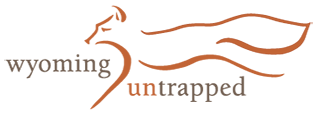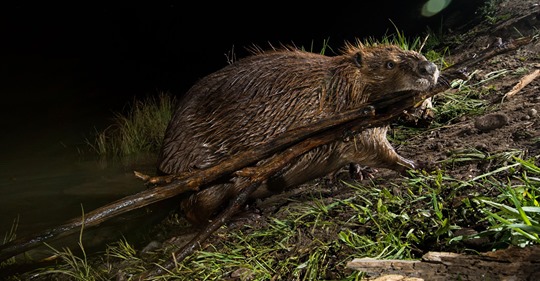Beavers on the coast are helping salmon bounce back. Here’s how.
PORT ANGELES, WASH.On a blue-sky summer day, threatened Chinook salmon leap from the Elwha River, in northwest Washington, as they persevere upstream. Here at the river mouth, the water flows powerfully enough into the Strait of Juan de Fuca to almost knock me off my feet while standing in a side-channel, a testament to salmons’ strength. Upstream, the fish will muscle through the verdant delta, cross Lower Elwha Klallam tribe land, and persist up through the waterways of the rolling green mountains of Olympic National Park. There they will lay their eggs in streams much smaller than this wide river, and their offspring will hatch in the snowmelt from the Olympic mountains.
When the young salmon begin their own journey out to sea, down the streams and across the land, they’ll find a very different delta than their grandparents did. The Glines Canyon and Elwha River dams, both close to a hundred years old, were dismantled between 2011 and 2014—the largest dam removal project in history. Within months, the sediment-starved delta was restored.
Removal of the two dams on the Elwha River from 2011 to 2014 has allowed Chinook salmon, like those pictured here, to make their way to historic spawning grounds.
PHOTOGRAPH BY MARK CONLIN, ALAMY
Since 2014, the Elwha’s delta has grown by at least 100 acres and pushed out into the strait more than 300 feet, creating new space for birds, butterflies, willow, alder, yellow-tongued monkeyflower, and lavender searocket. Threatened Chinook salmon, whose overall population has declined by 60 percent since 1984, have almost doubled in the Elwha since the dam removal. A record 9,000 salmon are expected this year, according to Patrick Crain, chief fisheries biologist at Olympic National Park.
This tidally salty wetland might seem a strange place to search for beaver, which are known to settle in freshwater ponds, lakes, rivers, and wetlands throughout North America, but that’s what I had come for. The beavers’ presence is remarkable not just because they’re only typically found inland, but also because their ecosystem engineering is the suspected key to the remarkable Chinook salmon recovery that’s going on here.



